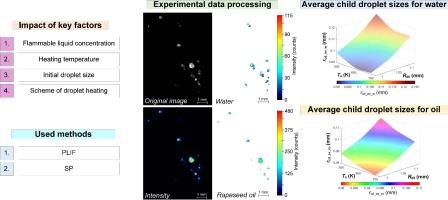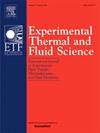The paper presents the experimental research findings on the compositions of child droplets produced by puffing and micro-explosion of parent two-liquid droplets. The droplets under study consisted of water and rapeseed oil. The research was carried out with varying concentrations of liquids in droplets, ambient temperatures, heating arrangements and initial sizes of two-liquid droplets. Parent droplets were heated in a flame, in a muffle furnace, and on a heated substrate. Child droplet compositions were identified using Laser Induced Fluorescence. Compositions were separated based on the difference in the fluorescence of liquids in child droplets exposed to laser radiation. Typical distributions of child droplets by size were obtained for water and rapeseed oil during parent droplet fragmentation when there was a group of contributing factors. The child droplet sizes were measured for water and rapeseed oil. Laser Induced Fluorescence was successfully used to identify different liquids in child droplets following the micro-explosive fragmentation of two-liquid droplets. The experimental data were processed to establish functional relationships between the main factors, parameters and integral characteristics of the investigated processes. Dimensionless criterion relationships and mathematical expressions were proposed for transferring the experimental results to different scales and conditions for heating two-liquid droplets. The applicability of this approach was described. Guidelines were provided on developing the proposed approach for heterogeneous compositions of parent droplets.



